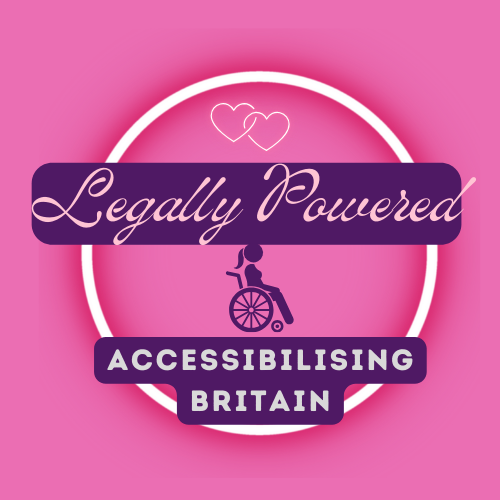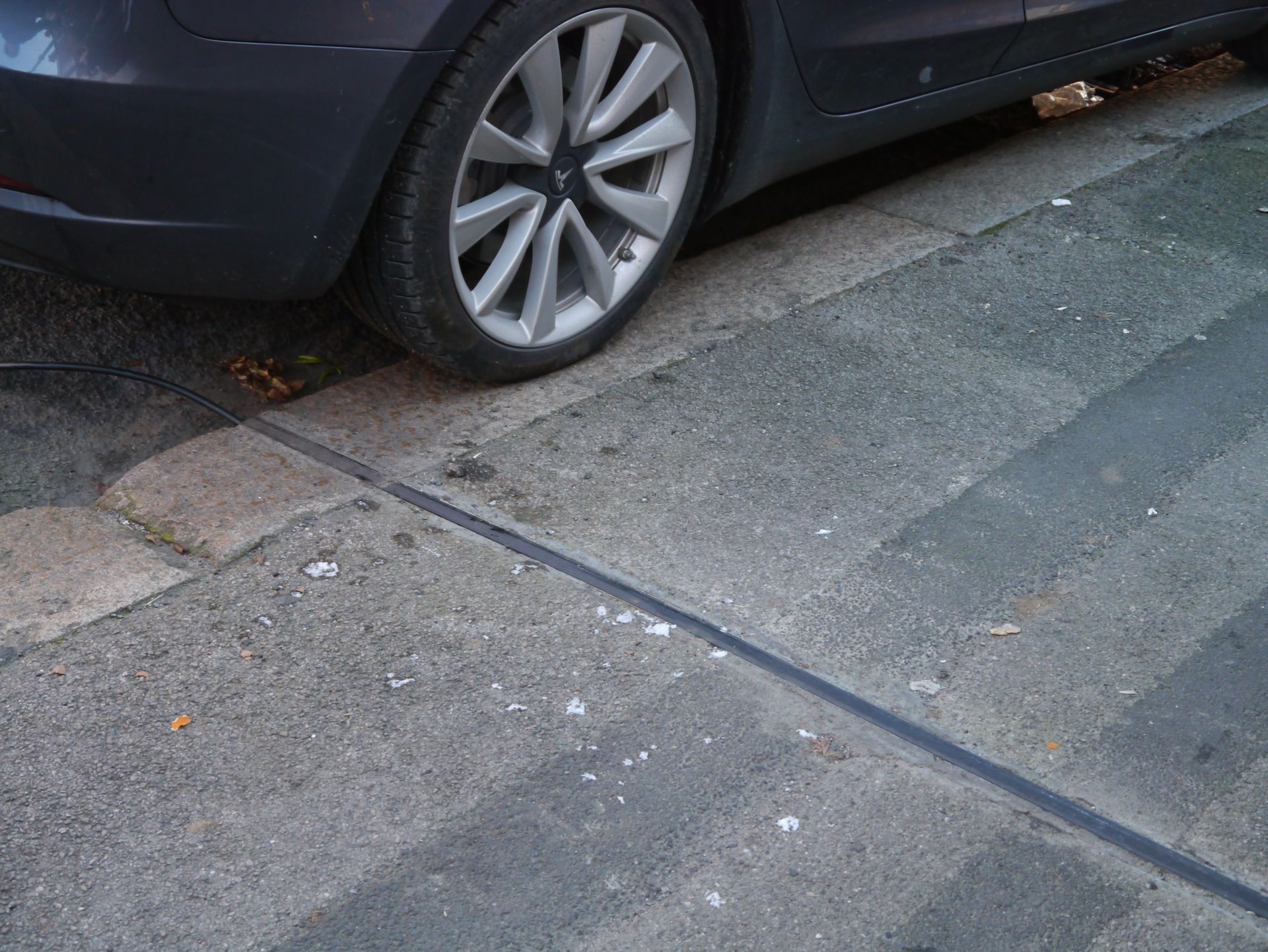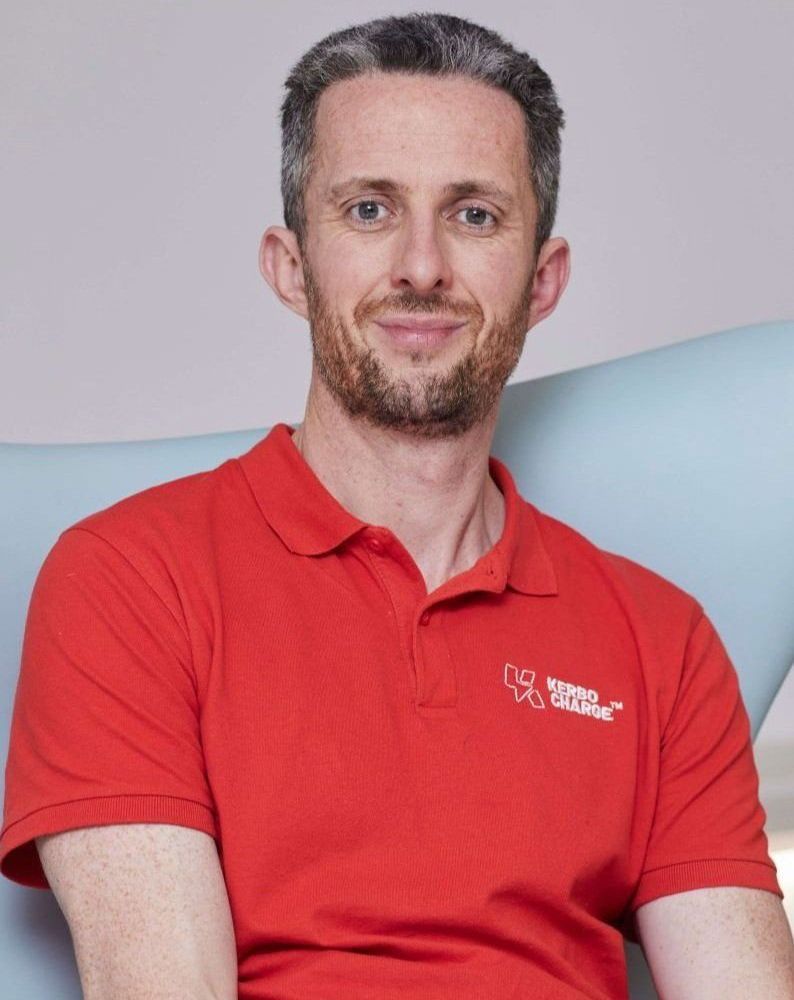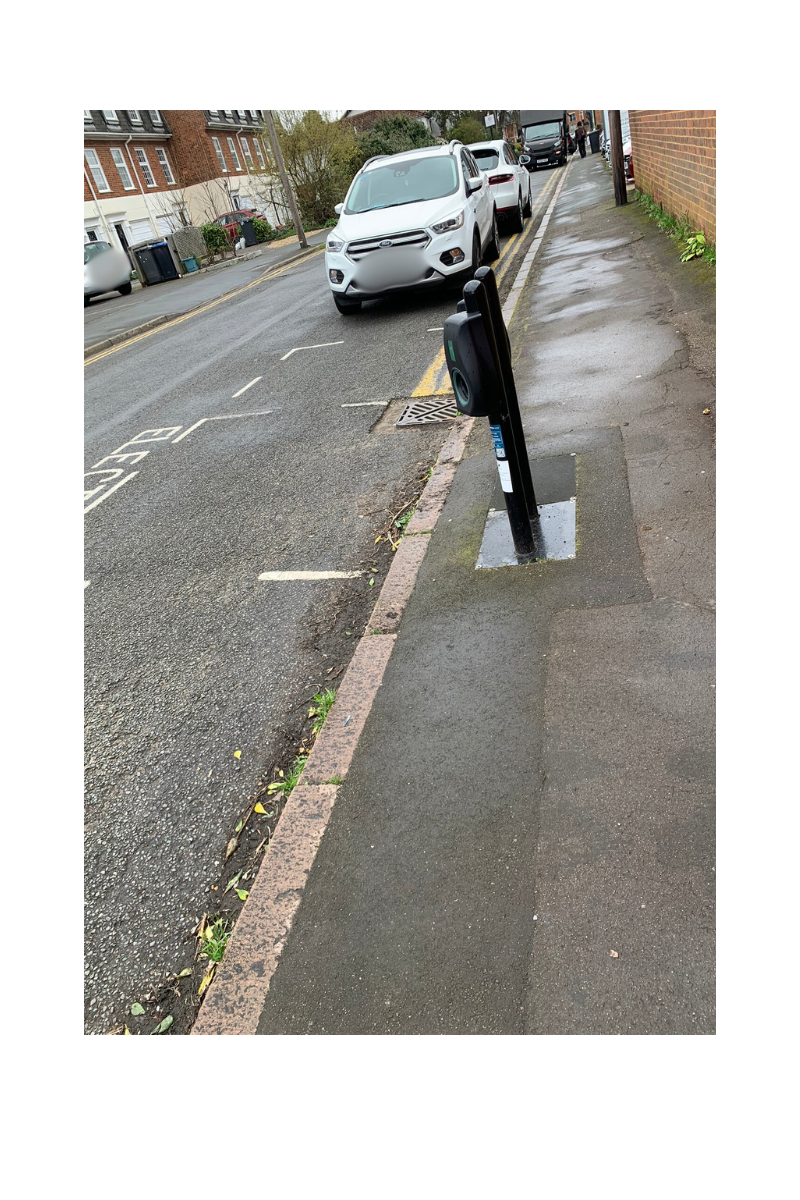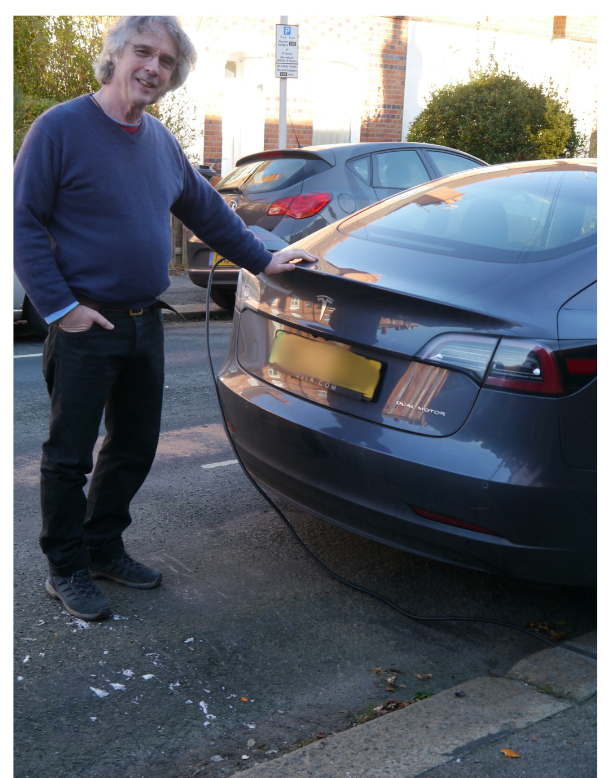New EV cable gullies are currently being trialled in local authorities. CEO and co-founder Micheal Goulden talks about his invention and how he plans to make it accessible to all.
Electric cars are set to become a thing of the future. For those with drive-ways charging them does not pose an issue but for those with no off-street parking the situation is far from ideal and creates significant challenges for those with disabilities and sensory impairments.
Companies across the country are working to make EV charging at home accessible for all. Micheal Goulden, CEO and co-founder of Kerbo Charge is one of the people paving the way forward.
‘It was when I was driving around London, trying to find a charge point that was working,
had two failed attempts, and thought, as I walked past row
upon row of houses
that had a perfectly adequate power supply outside the house,
there must be a way of safely getting the power from the house to the car.’
Putting his ideas forward and working together with business acquaintance and co-founder Ben Whitaker, who has a manufacturing engineering background, Kerbo Charge was formed.
Kerbo Charge works by a gully being inserted into the surface of the pavement outside of the house to the edge of the kerb. The EV cable is then inserted into the gully by bending down, lifting up the lid and pushing in the cable. The lid itself has a self-closing mechanism which snaps down after inserting or removing the charger.
EV Cable Gullies are not new to the market with the first one being trialled between 2017-2019 in a collaboration between Oxford City Council and Oxford Couty Council under the Go Ultra Low Emission (GULO) plan.
Kerbo charge should not be confused with Gul-e, once known as GULO, which whilst a similar concept, has different mechanisms.
The standout difference between the two, from first look is, Kerbo charges patented lid.
On examining Kerbo Charge at the house of Tim Liddle in Reading Berkshire, the first in his local authority to have Kerbo Charge installed, it sat flush within the pavement, making this extremely accessible to walk over with no obvious hazards.
It also took away the need for narrowing the pathways and trailing leads.
Tim said ‘it is now much easier to charge my vehicle. I do not have to park the car in town and walk back home as I would never trail a lead across the pavement.’
‘It is now much easier to charge my vehicle.
I do not have to park the car in town
and walk back home as I would never trail
a lead across the pavement’.
Kerbo Charge has recently received investment from Deborah Meaden after appearing of Dragons Den and is starting to gain the attention of other local authorities.
However, the mention of how the product affected those with disabilities was lacking so I spoke to Vicki Wilson who has Cerebral Palsy and is a full-time wheelchair user to get her thoughts on the product.
Vicki said, ‘at first glance it looks really good and takes away the need for trailing leads and will help those like me who do not have a driveway’.
However, Vicki advised ‘I would not be able to bend down to use the charger myself as there would be a danger I would fall out of my wheelchair in trying to insert the charger into the channel’.
‘I would not be able to bend down to use the charger myself
as there would be a danger I would fall out of my wheelchair
in trying to insert the charger into the channel’.
Michael Advised ‘At the moment, you do need to be able to crouch down to insert the cable - it's very easy to pull it out.
We do know that we have several residents that have disabilities that will be getting an installation soon in some forthcoming trials. Some of these are Motability customers. We're really looking forward to speaking to them about the experience and to gain feedback on how we can continue improving.’
With the government pushing ahead with their 2030 agenda with 80% of new cars being zero omission, Motability customers will be affected the most, with changing their cars every three to five years. For those without driveways, parking 20 minutes away to charge a car overnight is often not an option, so it would be good to see the cable gully included in the scheme.
I spoke to Lewis Dixon operation Manager at ODS who now runs the trial of GUL-e on behalf on the city and county council in Oxford with the trial running into other local authorities around the country who said
‘our gully is accessible as the cable can be inserted from waist height, in the gap in the pavement and for those that need extra help a crevice tool is available’.
‘Our gully is accessible as the cable can be inserted from waist height,
in the gap in the pavement
and for those that need extra help a crevice tool is available’.
According to Surrey County Council website, who are trialling both the Gul-e and Kerbo charge, only one in five on-street chargers will be accessible.
Many disabled drivers do not have a disabled bay outside their house. Therefore, with the option of not always being able to find an accessible charger this is something local authorities may need to address.
Michael advised the EV car charger, with permission from the local authority, can be used one parking space either side of outside the home by trailing it in the gutter carefully. However, putting up signs to say EV charging space was a no-no!
Regarding financial accessibility, having a charger at home is also more cost effective. According to Zap-Map using a public charger can currently cost up to 46p/kWh on slow/fast chargers.
Tim Liddle uses his own electric supply, which he advises, only costs him 7.5p/kWh which is a massive saving compared to public chargers.
Asking if there were plans to make Kerbo Charge permanent and their future plans Micheal said, ‘we are in advanced stages of discussions with some local authorities about this.
Let's make it possible for residents living in cities who mostly don't have off -street parking to be able to charge at home. And let's accelerate the improvement of the environment around us and the reduction of CO2 emissions so they have a brighter future’.
‘Let's make it possible for residents living in cities who mostly don't have off -street parking
to be able to charge at home.
And let's accelerate the improvement of the environment around us
and the reduction of CO2 emissions so they have a brighter future’.
Questioning Michael on if he had plans to make the charger more accessible in the future, he said ‘Yes, those are very much in our plans. We are working at this very moment on an accessibility tool so that anybody with reduced mobility, or for example, if they're in a wheelchair, would be able to easily insert their cable.'
Michael went on to advise they hoped this device would be available to Kerbo Charger users in the second quarter of 2024.
‘We are working at this very moment on an accessibility tool so that anybody
with reduced mobility, or for example,
if they're in a wheelchair,
would be able to easily insert their cable.’
For thousands out there with a disability we look forward to how their vision unfolds.
To find out more about this product please visit the
Kerbo Charge website.

